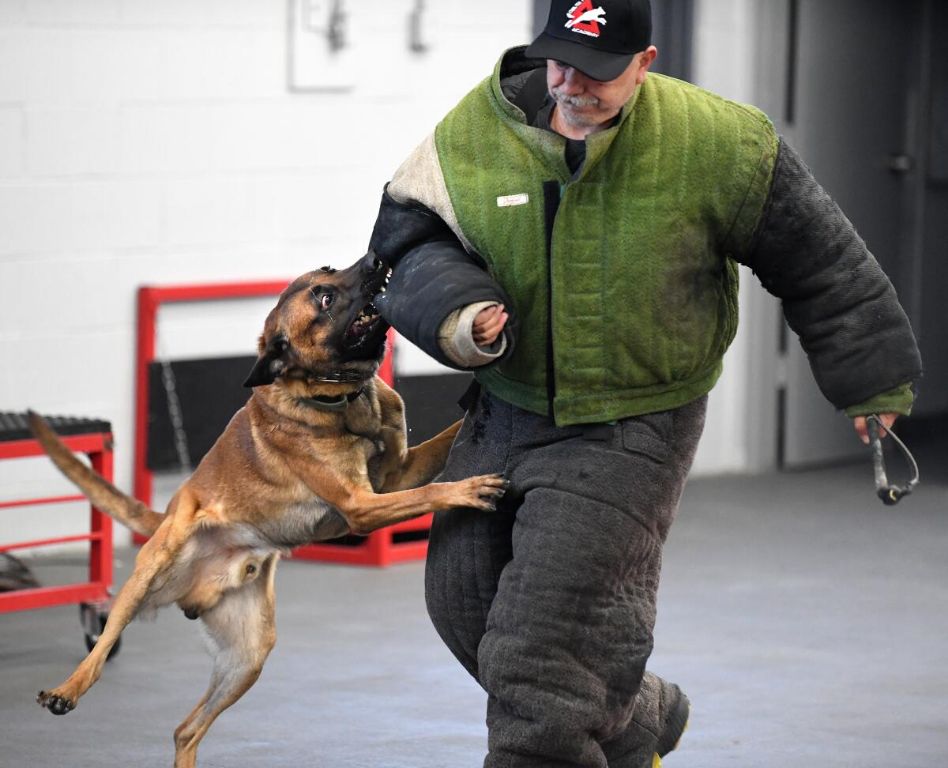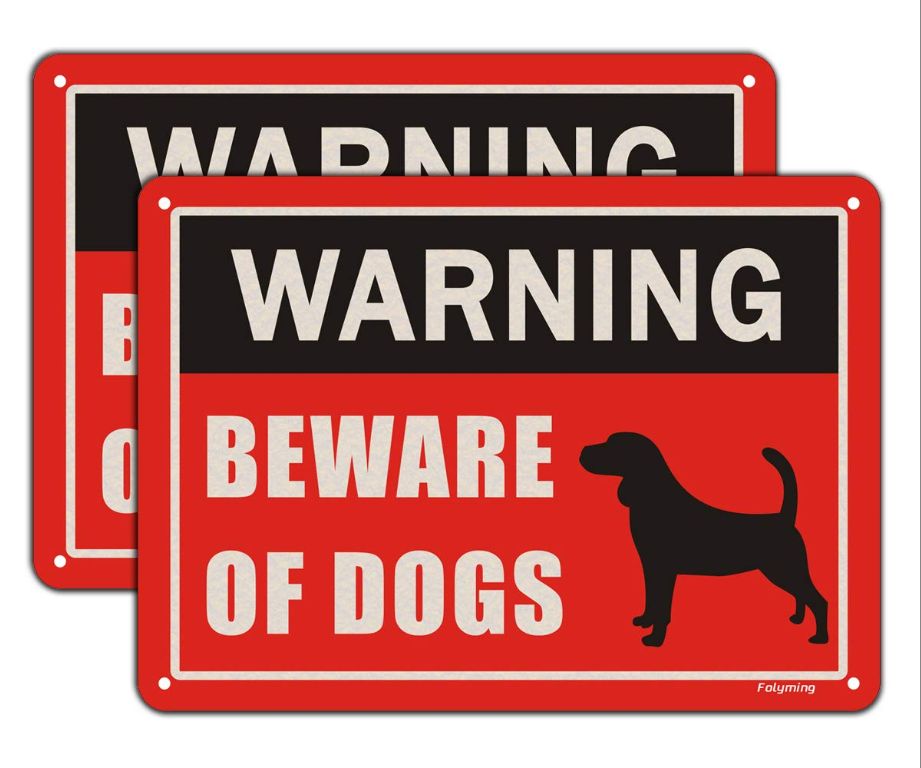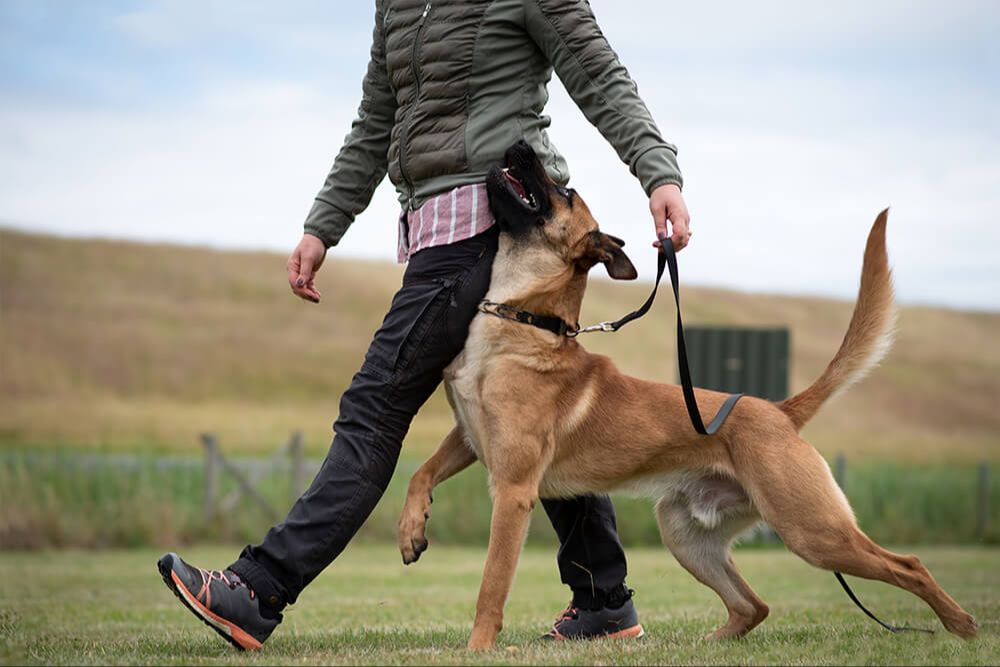Introduction
The idea of our beloved canine companions leaping to our defense is the stuff of heroic movies and daydreams. Yet some dogs do have protective instincts that compel them to defend their owners from harm. While heartwarming, a dog’s protective response can have serious legal and safety implications if not properly managed. This article will explore when it’s legally permissible for dogs to defend their owners, how certain breeds can be trained for protection work, warning signs of unwarranted aggression, real-life examples of dogs fending off attackers, and most importantly, how to avoid situations where your dog feels the need to get protective in the first place.
Legalities of Dog Defense
Laws regarding dog bites and defense vary by state in the US. Generally, dog owners can be held liable if their dog bites or injures someone, even if the bite occurred while defending the owner. However, the law recognizes situations where a dog may justifiably bite in defense of its owner from an unprovoked attack.
According to the law of self-defense, a dog owner may be able to claim their dog was acting in defense of them if the following conditions are met: the threat was imminent, the force was reasonable, and the dog owner did not provoke the attack. Deadly force would only be justified against threat of death or serious bodily harm. Owners still risk liability if their dog inflicts excessive harm beyond a reasonable response.
While pets are considered property legally, courts recognize they can act independently. As long as the owner did not command or provoke the dog to attack, the dog may be viewed as acting on natural instinct to protect its owner from harm. However, owners must take care not to put their dogs in situations where biting is more likely, or they could still face charges of negligence.
Training Dogs for Protection
Protecting their family and property comes naturally to some breeds, but any dog can benefit from proper training. Protection training focuses on building confidence, control, and responsiveness in your dog. It teaches them to distinguish real threats from normal activity, and to only act on command from their handler.
There are several important components to protection training:
- Basic obedience – Having a solid foundation of obedience is crucial so the dog reliably responds to commands in any situation.
- Barking on cue – Teach your dog to bark loudly when prompted, both as a warning and to alert you.
- Assessment and socialization – A protection dog must remain calm and ignore non-threats. Proper socialization and temperament testing prevents overreactions.
- Detecting threats – Train your dog to pick up on body language, movements, or sounds that indicate a real threat is present.
- Controlled aggression – With professional guidance, dogs can be taught to display aggressive behaviors like barking, growling, and biting on command during specific scenarios.
- Out on command – Equally important is having an “out” or “release” command so the dog disengages when instructed.

Attempting protection training without an expert can produce dogs that are fearful, overly aggressive, or unreliable. Consult with accredited trainers to implement a customized program for your needs.
Sources:
https://www.wikihow.com/Train-a-Guard-Dog
https://pethelpful.com/dogs/train-guard-dog
Warning Signs of Aggression
Dogs typically give off warning signs before resorting to biting. Being able to recognize these subtle signals can help prevent bites. According to The Five Subtle Warning Signals Dogs Display, some common signs a dog may bite include:

- The dog’s body may become stiff or rigid
- The dog stares at you directly in the eyes
- The dog exposes its teeth
- The ears are erect and focused forward
- The tail sticks straight out instead of wagging
These signals indicate the dog feels threatened or aggressive. Heeding these warnings by backing away or removing the dog from the situation can prevent escalation. It’s important to understand dog body language and not ignore these subtle signs of brewing aggression.
Dog Breeds for Protection
Certain dog breeds are known for being more protective due to traits like loyalty, territorialness, strength, and guarding instincts. According to the AKC, some of the best dog breeds for protection include:
- German Shepherds – Intelligent, confident, and loyal, German Shepherds will use their size and strength to defend their family. They are one of the most popular breeds for police and military work.
- Rottweilers – Historically used as guard dogs, Rottweilers are territorial, powerful, and protective. Their intimidating appearance alone can deter intruders.
- Doberman Pinschers – With their athleticism, intelligence, and fierceness when provoked, Dobermans make excellent watchdogs and guard dogs. They are fast and ready to protect home and family.
- Bullmastiffs – As gentle guardians by nature, Bullmastiffs use their imposing size and loud bark to ward off threats. They can knock down intruders if needed.
Other notable breeds include Belgian Malinois, Cane Corsos, Giant Schnauzers, and Akitas. It’s important to train any dog properly and avoid encouraging aggression. With their loyal natures and ability to intimidate, the right breeds can help keep homes safe.
Real-Life Examples

Dogs protecting their owners from harm is more common than one may think. There are countless real-life examples of canine heroes leaping into action to defend their beloved humans. For instance, a viral TikTok video captured by a pet camera shows two dogs growling and barking aggressively while a man attempts to break into the home of their owner who was away (Source). The protective pups likely scared the intruder away and protected the house from robbery.
In another remarkable case, a dog named Eva protected her owner Erin Wilson from a mountain lion attack while they were hiking in California. When the big cat pounced and scratched Wilson’s shoulder, Eva jumped between them and barked ferociously scaring the mountain lion off (Source). Eva’s quick actions saved Wilson from further injury.
There are countless more examples of dogs valiantly putting themselves in harm’s way to protect their beloved humans. Their protective instincts and loyalty make dogs heroes in the eyes of many owners.
Avoiding Dangerous Situations
It’s always best to avoid situations where your dog feels the need to defend you in an aggressive manner. Here are some tips to help prevent the need for defense:
Be aware of your surroundings. If you see people, other dogs, or situations that seem to trigger your dog’s protective instincts, cross the street or otherwise avoid them.
Use a leash and muzzle in public situations when necessary. This gives you better control of your dog and prevents biting incidents.
Consider a training class or professional trainer to help ease your dog’s reactivity. Counterconditioning can help them feel more comfortable around triggers.
Give strangers treats to toss to your dog from a distance. This creates a positive association with people.
Socialize your dog extensively starting from puppyhood. Dogs who are well socialized and comfortable in public are less likely to become overly protective.
Manage your response if your dog reacts. Remaining calm and redirecting their attention helps prevent escalation.
Cross the street, create distance, or otherwise avoid off-leash dogs. Strange dogs running up to your leashed dog can provoke a defensive reaction.
Keep walks positive and avoid situations your dog struggles with until you’ve worked up to it through training.
Obedience Training
Obedience training is a crucial component for any protection dog. Without a solid foundation in obedience, a protection dog cannot be reliably controlled and may pose an undue risk. As this source explains, “The first thing to be trained in any protection dog is obedience. There are many reasons for this but I want to start off with the biggest one: LIABILITY.”
A protection dog that does not have rock-solid obedience training could fail to obey commands in a real-life situation, potentially resulting in harm. Obedience gives the handler complete control over the dog. A protection dog that lunges or attacks in an uncontrolled manner is extremely dangerous.
Additionally, obedience helps build the bond between handler and dog. As stated by Protection Dogs Plus, “The obedience component of your protection dog’s training is vital. It’s not until you spend a day enjoying your new dog’s perfect recall and attentiveness that you fully appreciate just how important this aspect of training really is.”

In summary, obedience is the foundation on which all other protection dog skills are built. Without proper obedience, a protection dog poses serious risks. Ongoing obedience training develops the control, focus and bond needed for safe, effective protection.
Mistakes to Avoid
Many well-intentioned dog owners make mistakes when training their dogs to defend them. Some common errors include:
Using too much emotion. Getting frustrated during training can intimidate or scare your dog. Fear will dominate their mind and make it hard for them to learn. Stay calm and use positive reinforcement. [1]
Failing to socialize properly. Focusing too much on obedience without enough socialization can create shy or fearful dogs. Make socialization a priority. [2]
Training with companion dogs. Work one-on-one with your protection dog during training. Other dogs present can be a distraction.
No obedience training. A solid foundation in basic commands is essential for any protection dog. Don’t skip this critical step. [3]
Inadequate exercise. High energy dogs require plenty of exercise to avoid problem behaviors. Make sure your dog gets sufficient daily activity.
Conclusion
When it comes to training a dog for protection, it’s important to consider both the legal and ethical implications. While the law allows dogs to protect their owners from harm in many cases, any aggressive or excessive behavior can still result in consequences. Proper training focused on control and discipline is essential to keep everyone safe.
The most important takeaways include:
- Make sure you understand your local laws regarding dog defense.
- Work with professional trainers to instill proper obedience and control.
- Avoid breed stereotypes – any dog can be trained for protection.
- Socialize your dog extensively to prevent unwarranted aggression.
- Be a responsible owner by maintaining dominance and correcting unwanted behaviors.
- Keep your dog out of situations that can trigger their instincts.
- Never encourage or reward unwanted aggression in any context.
While dogs can legally defend you in many cases, the utmost caution is required to keep your pet and others safe. With the right training and responsible ownership, man’s best friend can legally become man’s protector too.